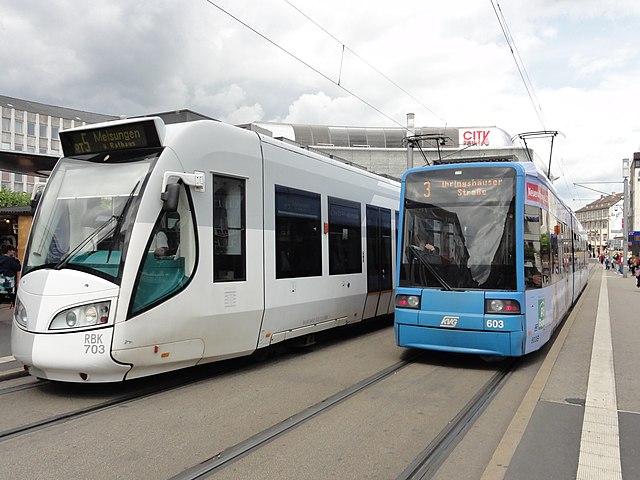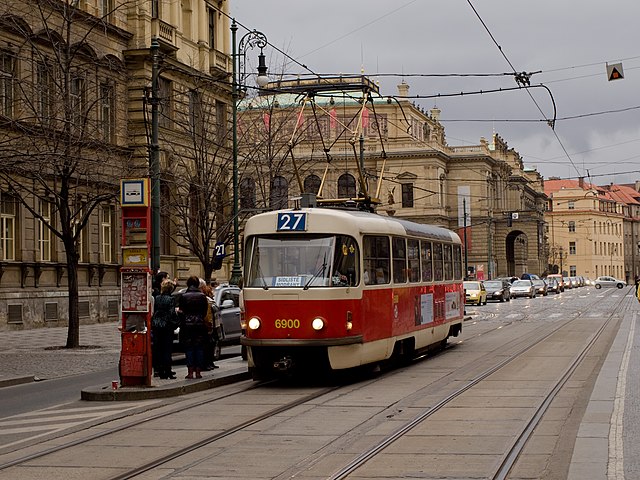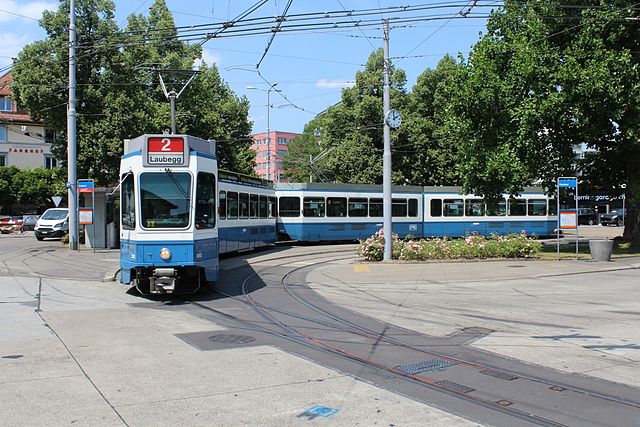A tram-train is a type of light rail vehicle that both meets the standards of a light rail system, and also national mainline standards. Tramcars are adapted to be capable of running on streets like an urban tramway but also be permitted operation alongside mainline trains. This allows services that can utilise both existing urban light rail systems and mainline railway networks and stations. It combines the urban accessibility of a tram or light rail with a mainline train's greater speed in the suburbs.
Stadtbahn street running, in Heilbronn
Stadtbahn on main-line railway
Kassel RegioTram dual voltage DC/AC Alstom RegioCitadis next to a KVG Bombardier Flexity Classic tram at Königsplatz
Kassel RegioTram dual mode diesel/electric Alstom RegioCitadis approaching Wolfhagen using diesel power, on main-line railway
A tram is a type of urban rail transit consisting of a rail vehicle, either individual railcars or self-propelled trains coupled by a multiple unit, that runs on tramway tracks on urban public streets; some include segments on segregated right-of-way. The tramlines or networks operated as public transport are called tramways or simply trams/streetcars. Many recently built tramways use the contemporary term light rail.
With more than 14,000 units built, Tatra T3 is the most widely produced tram model in history.
Zürich tram multiple-unit train.
Melbourne E-Class Tram. The Melbourne tram network is the largest in the world, with 250 km (160 mi) of track.
A horse-drawn tram operated by Swansea and Mumbles Railway, 1870. Established in 1804, the railway service was the world's first.








